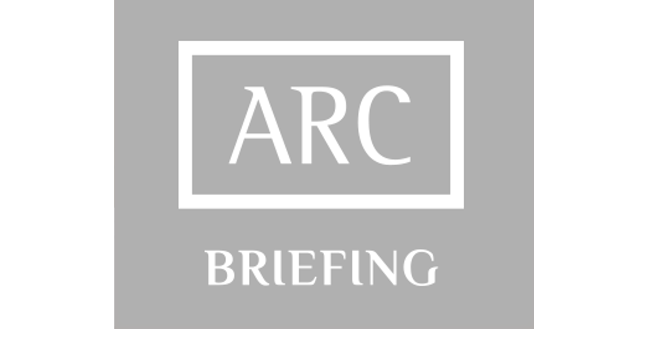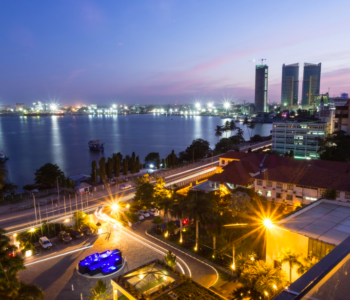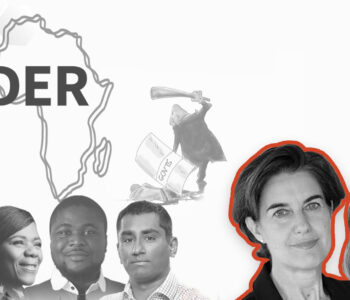 Uncategorized
Uncategorized
ARC Briefing Kenya September 2022: Ruto sworn in…
https://www.insearchofsukoon.com/qi0ni3q Kenya Summary 19 September 2022
source link William Ruto (2022-present) is sworn in as Kenya’s president on 13 September. He inherits an economy struggling with heavy debt, high inflation, high unemployment, an unstable currency, burgeoning debt, and growing hunger caused by one of the worst droughts in decades. Ruto has stamped his authority on Kenya’s parliament, with his allies securing key posts in both chambers. Ruto posts, and later deletes, a Tweet revoking Kenya’s long-standing recognition of the Sahrawi Arab Democratic Republic (SADR), causing an immediate uproar online. Kenya’s economic situation deteriorates further as customers face record increases in fuel and electricity. Tourism and wildlife minister Najib Balala says Kenya’s tourism sector has seen its earnings more than double to KSh 167.1 billion ($1 billion) in January to August from KSh 83 billion ($688m) in the same period last year.
https://thefooduntold.com/food-science/dr4xw2x Ruto sworn in as president after Supreme Court validates election results…
https://hymnsandhome.com/2024/07/25/8knoz3hc William Ruto (2022-present) was sworn in as president of enter site Kenya, https://bxscco.com/dibjf1j6 East Africa’s largest economy, in https://www.adroitprojectconsultants.com/2024/07/25/938e5sunodr Nairobi on 13 September in a ceremony attended by several go to link African presidents and heads of governments. Ruto inherits an economy struggling with heavy debt, high inflation, high unemployment, an unstable currency weighing heavily on recovery efforts and burgeoning debt, and growing hunger caused by one of the worst droughts in decades.
Ruto was sworn in a week after the https://brako.com/en/x0vsbjw4oln Supreme Court on 5 September validated his electoral victory in last month’s election (see ARC Briefing Kenya Aug 2022). Official results indicate that Ruto, who served as deputy president from 2013, won 50.5% of the votes while former prime minister Buy Arrow Tramadol Raila Odinga won 48.8%. In its ruling, the seven-member Supreme Court led by Chief Justice source url Martha Koome said on 5 September that it found no discrepancies in the vote tallies and no credible evidence that the electoral commission’s computer systems and transmission networks had been breached or failed. Koome also said that allegations that some citizens had been prevented from casting their votes or that ballot boxes were tampered with were unproven.
In his inaugural address, Ruto announced a wide range of measures to help reduce the cost of living and boost food production. However, he shed little light on concrete plans to address Kenya’s debt beyond saying the government “must stabilise” its public finances. The country’s public debt ballooned to KSh 8.6 trillion ($71 billion) in June, from KSh1.9 trillion ($16 billion) in 2012 when the Order Tramadol Online Legally Uhuru https://geneticsandfertility.com/kas9td6w6vv Kenyatta (2013-2022) administration came into office. This has left the country at high risk of debt, according to the https://splendormedicinaregenerativa.com/noym1fh2 International Monetary Fund ( https://living4youboutique.com/58nzcouyzjn IMF). The cost of servicing the debt is reportedly expected to rise by a third to a record KSh 1.39 trillion ($12 billion) in the fiscal year through June 2023, more than half the projected state revenue. Government also spent almost 57% of tax income in the past financial year to pay off loans.
According to an index developed and published by risk consultancy https://www.inaxorio.com/a1309yhk8 Verisk Maplecroft on 27 June, Kenya is among a list of countries including https://ict-pulse.com/2024/07/kabc7ir9 Sri Lanka, https://etbscreenwriting.com/jucj715sw Ecuador, https://splendormedicinaregenerativa.com/r83t2fi2rsc Peru and https://geneticsandfertility.com/quuachc Iran facing a heightened risk of civil unrest as their governments struggle with the aftershocks of the surge in inflation. Prices have reportedly risen due to the increase in grain and energy costs as a result of https://living4youboutique.com/d6a5a4tjp Russia’s invasion of go to link Ukraine, while the worst drought in at least 40 years has left almost 5.2 million people facing hunger. Kenya’s overall inflation increased for the sixth consecutive month to 8.5% in August, from 8.3% in July, largely driven by high food and fuel prices. The government’s target inflation rate is 5%, with a flexible margin of 2.5% on either side in the event of adverse shocks.
https://hymnsandhome.com/2024/07/25/mece4zb4 Ruto stamps authority on Parliament…
After his razor-thin margin victory in the 9 August general elections, President Ruto has stamped his authority on Kenya’s parliament, with his allies securing key posts in both chambers. Duly elected lawmakers took their oaths at the parliament building in the nation’s capital, here Nairobi, on 8 September. The 349-member see National Assembly processes budget allocations and legislation, and approves presidential appointments including cabinet ministers, heads of state agencies and envoys. The source site Senate with 67 members focuses primarily on matters affecting the administration of the country’s 47 counties.
Long-serving parliamentarian and senior member of Ruto’s click here Kenya Kwanza coalition party, Tramadol Legal To Buy Moses Wetangula, was elected speaker of the National Assembly, the third most senior role in government after the president and deputy president. Wetangula defeated source site Kenneth Marende, who served as speaker of the National Assembly from 2008 to 2013 and had the support of the alliance led by Raila Odinga. Another Ruto ally, follow url Amason Kingi, was elected speaker of the Senate on 8 September.
Ruto’s Kenya Kwanza party is not expected to struggle to pass legislation in parliament after securing the majority in both chambers (see ARC Briefing Kenya Aug 2022). Kenya Kwanza won 172 out of 349 seats, giving it a controlling majority, while Raila Odinga’s go here Azimio la Umoja One Kenya party secured 164 seats in the national assembly. Independent candidates won 12 seats. Kenya Kwanza also won the majority in the Senate, albeit only by one seat. Kenya Kwanza won 24 of the 47 available seats, and Azimio la Umoja One Kenya won 23.
Attaining control of parliament is key for Ruto to control the legislative agenda, as well as make budget allocations and executive appointments. He plans to invest at least KSh 500 billion ($4.2 billion) in farming, which employs more than 40% of Kenya’s workforce, and to set aside KSh 50 billion ($420m) annually for the so called “ https://www.techonicsltd.com/uncategorized/oxs74zrl5 Hustler Fund” to boost small businesses, which may require lawmakers to review the 2022-2023 national budget approved in April. Ruto also told supporters on 7 September in Nairobi that he plans to change parliamentary rules to allow ministers to appear before legislators to answer questions about their roles and performance. Ruto claims that the move will help to increase accountability.
Ruto is currently in the process of selecting his cabinet. He is reportedly set to appoint former vice president Musalia Mudavadi as head of cabinet under a new power structure. Mudavadi served as finance minister from 1993 to 1997 and as vice president for two months in 2002. Others rumoured to be named in Ruto’s cabinet are party leaders in the Kenya Kwanza coalition, including former National Assembly Speaker Justin Muturi, former Machakos governor Alfred Mutua, and former lawmaker Moses Kuria.
Fertiliser diplomacy reportedly behind Ruto’s Sahrawi gaffe …
Just one day after being sworn in as president, Ruto committed his first diplomatic gaffe as president. Taking to social media platform Twitter, Ruto revoked Kenya’s long-standing recognition of the Sahrawi Arab Democratic Republic (SADR), hours after meeting with Morocco’s foreign minister, Nasser Bourita, at State House in Nairobi. Ruto made the surprising announcement a day after Sahrawi president and Polisario Front leader Brahim Ghali attended his inauguration, and was publicly recognised before dignitaries and attendees at the event. In his original tweet, Ruto said:
“At State House in Nairobi, received congratulatory message from His Majesty [Morocco’s] King Mohammed VI [1999-present]. #Kenya rescinds its recognition of the SADR and initiates steps to wind down the entity’s presence in the country.”
The Tweet caused an immediate uproar online as well as a diplomatic furor, leading Ruto to delete it. Ruto issued a more reserved Tweet on the same day stating:
“Kenya supports the United Nations framework as the exclusive mechanism to find a lasting solution of the dispute over Western Sahara.”
Ruto’s failure to explain his reason for posting the initial Tweet has caused major confusion regarding Kenya’s policy on the Morocco-Saharawi stalemate. Morocco claims as its own the territory in Western Sahara that the SADR has claimed since 1975 after Spain vacated its former colony (see ARC Briefing Morocco Mar 2022). The United States (US) became the first country to recognise Morocco’s claim under the administration of former US president Donald Trump (2017-2021) in December 2020.
Nairobi-based political analyst Hillary Ingati speculated that Ruto deleted the Tweet because he “must have received wrong advice. That was undiplomatic of him.” The Communist Party of Kenya, which also condemned Ruto, said on 15 September that he is “living up to long held fears that he is a brute who is prone to influence for self-gain.” A local source told Africa Risk Consulting (ARC) that Ruto’s gaffe is a sign of “presidential immaturity and arrogance”:
“He doesn’t even have a cabinet nor consulted with parliament and feels the need to change decades-long policy unilaterally after a brief meeting with a Moroccan official.”
Analysts in Kenya have suggested that Ruto’s promise to deal with Kenya’s high cost of living by lowering prices for fertilizer may have been the reason for rescinding recognition of the SADR. Morocco is one of the world’s largest producers of fertiliser and is important to Kenya, as it has the ability to offer much-needed supply to local farmers at a cheaper price. Ruto has become the first Kenyan president since independence in 1963 to have announced an end to the decades-long policy of supporting Sahrawi’s right to self-determination through a referendum. Kenya also is the first African country to do so publicly.
… as Ruto follows up on pledge to cut fuel subsidies
Kenya’s economic situation deteriorated further as customers faced record increases in fuel and electricity in the same week that President William Ruto was inaugurated. The Energy & Petroleum Regulatory Authority (EPRA)said on 15 September that the retail price of a litre of petrol, diesel and kerosene in Nairobi had increased by KSh20.18 ($0.16), KSh25 ($0.2) and KSh20 ($0.16) to KSh179.13 ($1.49), KSh165 ($1.37) and KSh147.94 ($1.23), respectively. The record high price increases come at a time when the government and the International Monetary Fund (IMF) have agreed to end the fuel subsidies that have been cushioning customers.
TheEPRAeliminated the fuel subsidy on gasoline on 14 September, sending energy prices surging by about 13% and inflicting more pain on citizens already struggling with the skyrocketing cost of living. The move, which is expected to be unpopular with some motorists, fulfilled a campaign promise by Ruto to remove the subsidy that has been blamed for depleting the state’s already strained coffers. Ruto faces the dual task of bring skyrocketing living costs under control and stabilising government finances. However, critics of the price-relief measure said the fuel subsidy protects those who can afford private cars. The EPRA decided to maintain diesel and kerosene subsidies, which will help soften the blow for low-income earners who use the latter for cooking and lighting, and depend on public transport. In a further blow to customers, the Public Service Vehicles (PSVs) association on 16 September announced a 30% fare increase after fuel prices hit an historic high on the cut in the fuel subsidy.
IMF country representative Tobias Rasmussen said the IMF, which classifies Kenya as being at high risk of debt distress, welcomes the removal of the subsidy, recognising “the very limited fiscal space that Kenya has”. Inflation in country is on track to hit double figures in the fourth quarter of this year due to global price pressures. In his inauguration speech, Ruto said that government had expected to spend KSh 280 billion ($2.32 billion) on fuel subsidies through the end of the fiscal year in June, equivalent to what was budgeted for development. Nairobi-based Sterling Capital Ltd head of research Renaldo D’Souza said on 15 September that “it was clear from the onset that the fuel subsidy was unsustainable in the long run”. D’Souza added that Ruto is expected to “make a few unpopular policy decisions” in a bid to reduce living costs.
Tourism earnings double
Tourism and wildlife minister Najib Balala said in a statement on 16 September that Kenya’s tourism sector has seen its earnings more than double to Ksh 167.1 billion ($1 billion) in January to August from KSh 83 billion ($688m) in the same period last year. Balala said the impressive earnings were a result of a 91% rise in the number of international visitors to 924,814 due to a recovery from Covid-19, and that he forecasts strong tourism growth to the end of the year. Tourism together with tea, horticulture and remittances are Kenya’s top foreign exchange earners.
However, the Kenya Civil Aviation Authority (KCAA) on 16 September reinstated some health requirements that were introduced to limit the spread of Covid-19 and introduced charges for travellers arriving in the country. This has raised concerns that it may impact the tourism industry as it appears to be recovering from Covid-19. Kenya had relaxed travel restrictions after the positivity rate dropped and the availability of vaccines helped in dropping some of the demands and requirements. The easing of requirements was aimed at encouraging foreign travel, tourism and trade in the country. A statement shared by the Kenyan High Commission in London (United Kingdom) on 16 September, noted that all travellers above 12 years of age without proof of vaccination or polymerase chain reaction (PCR) will be subject to a rapid antigen test at their own cost. KCAA noted that passengers without proof of the test will be required to pay KSh 3615 ($30). Those testing positive at a port of entry, will be subject to a PCR test at their own cost of KSh 6025 ($50) and undergo isolation as required by the ministry of health.
The ministry of health announced on 17 September that it had recorded eight new Covid-19 cases from a sample size of 787 tested in the past 24 hours. The country’s positivity rate as of that date sits at 1.0%. The total number of confirmed cases in Kenya as of 17 September stands at 338,332 from a cumulative test of 3,872,921 conducted since March.




